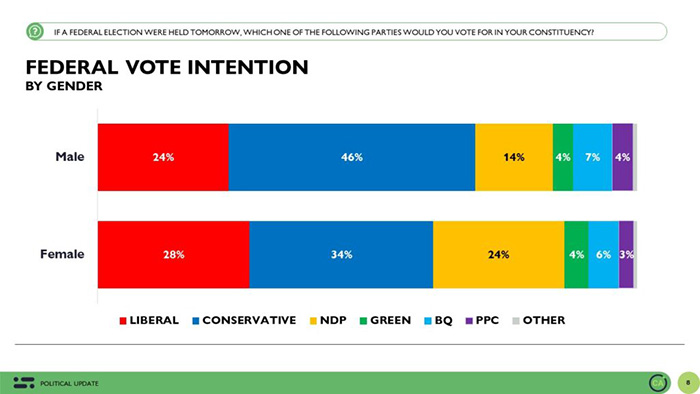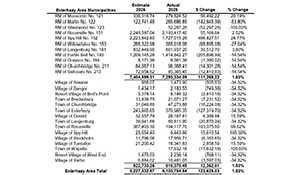Conservatives open up a 14-point lead over the Liberals as Poilievre’s personal rating turns positive
September 7, 2023, 4:12 pm
David Coletto


From August 29 to September 4, 2023, Abacus Data conducted a national survey of 3,595 adults exploring several topics related to Canadian politics and current events as part of our regular national omnibus surveys. In this survey, we oversample Ontario to a total of 2,010, BC to 700, and Atlantic Canada to 521 (we will be oversampling Atlantic Canada regularly to make sure we get a more accurate read of that region).
As Conservative activists are set to meet today in Quebec at their national convention, our tracking finds the party has opened up its largest lead over the Liberals since the 2015 election.
If an election were held today, 40% of committed voters would vote Conservatives with the Liberals at 26%, the NDP at 19% and the Greens at 4%. The BQ is at 30% in Quebec.
Since our last survey a two weeks ago, the Conservatives are up 2 while the Liberal and NDP vote share is unchanged.


Regionally, the Conservatives lead in every region except for Quebec. They have big leads in Western Canada, a 7-point lead in Ontario, and a 10-point lead in Atlantic Canada. In Quebec, the Liberals (28%) and BQ (30%) are statistically tied, but the Conservatives are not far behind at 25%.


In Ontario, the Conservatives and Liberals are statistically tied in Toronto while the Conservatives lead in the GTHA, eastern Ontario, and southwestern Ontario. Note, the sample size in northern Ontario is quite small so caution should be used when making any conclusions about ballot support in that region.




 See the above graph for more details
See the above graph for more details










































